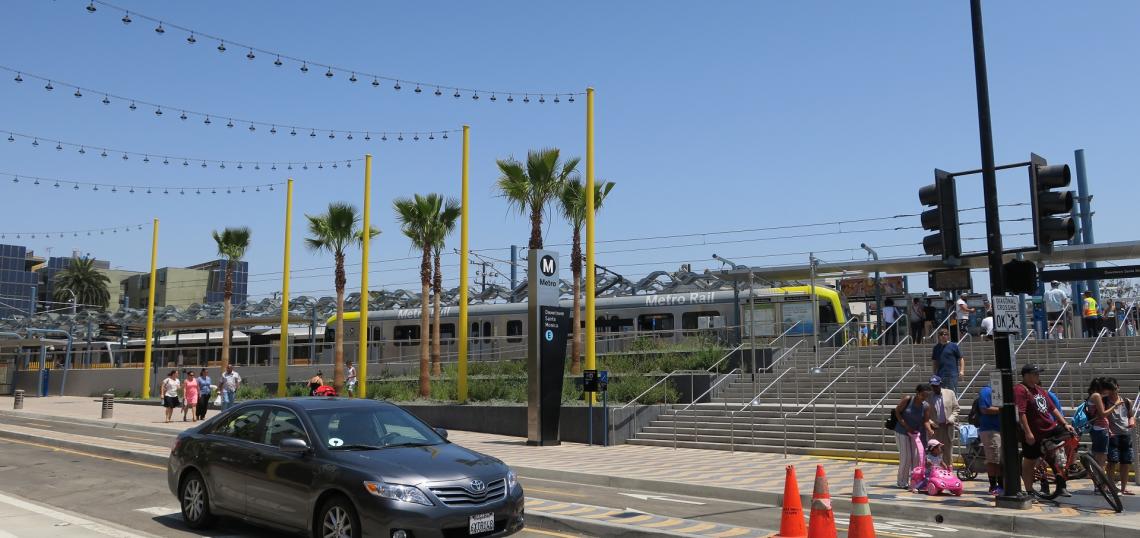According to Metro’s official ridership estimates, the Expo Line reached an impressive ridership milestone during the month of June. With a daily average of more than 64,000 boardings, Expo is attracting as many riders in 2017 as it was projected to have in 2030. The rail line, which connects Downtown Los Angeles to the Santa Monica Pier, has proven to be a major success with L.A.’s transit riders, despite complaints about the line’s speed and reliability.
Expo has outpaced projections in the past, despite concerns from some quarters about the fitness of rail technology to serve the former Pacific Electric right-of-way. Expo’s first phase, which terminated in Culver City, achieved projected 2020 ridership numbers in 2013, seven years early. The Reason Foundation in 2012 had previously said that the projection of 64,000 riders for the full build Expo Line “should be viewed with some skepticism.” The light rail line has experienced surging popularity since its six-mile second phase opened, and now has eclipsed that mark in just over a year.
Expo remains a bright spot for Metro as the MTA’s overall struggles with transit ridership continue. During the 2017 Fiscal Year, which ended in June, Metro’s bus boardings fell 9% from the previous year. Meanwhile, rail boardings increased 6%, with the net gains attributable primarily to Expo. The Gold Line has picked up riders at a more modest pace, while the Blue and Green lines have experienced a concerning trend of rapid ridership loss. The declines elsewhere, combined with a 60% annual growth for Expo, have boosted the Santa Monica-serving line to become Metro’s second-busiest light rail line, despite also being the shortest route in the system.
Scott covers transportation and governance issues from his home in Silver Lake. Follow him on Twitter @safrazie.
- Expo Line Highlights a Year in Which Overall RIdership Declines (Urbanize LA)
- Metro Archive (Urbanize LA)






